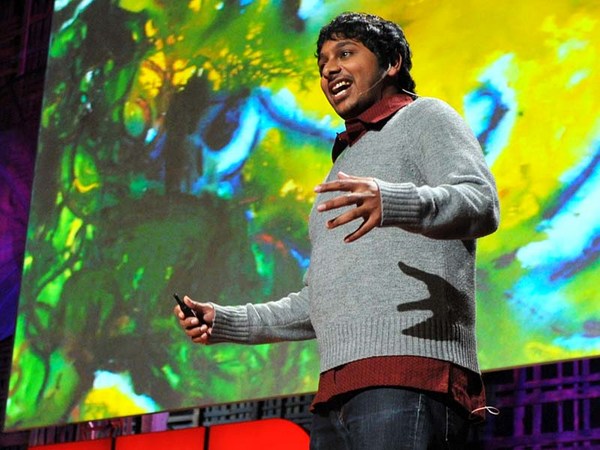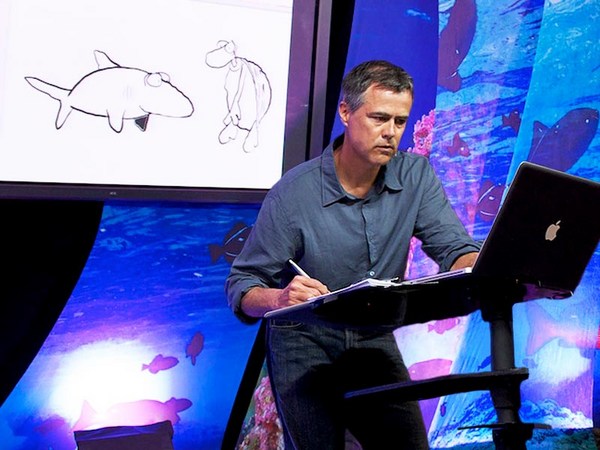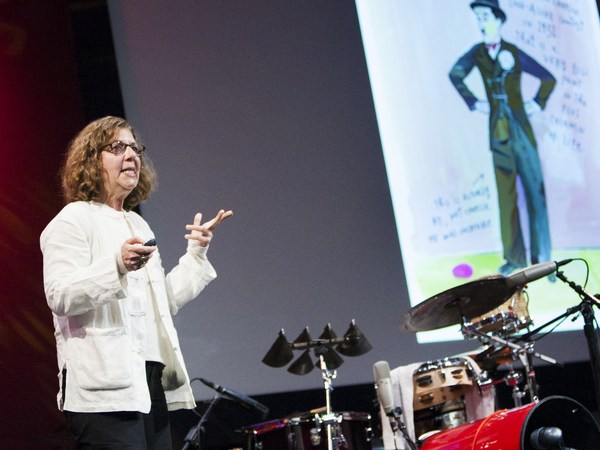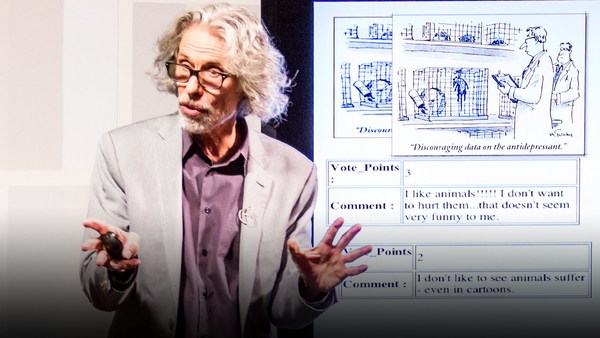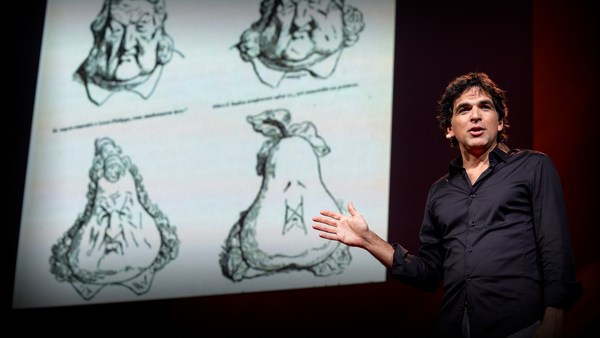(Laughter)
I was afraid of womanhood. Not that I'm not afraid now, but I've learned to pretend. I've learned to be flexible. In fact, I've developed some interesting tools to help me deal with this fear. Let me explain. Back in the '50s and '60s, when I was growing up, little girls were supposed to be kind and thoughtful and pretty and gentle and soft, and we were supposed to fit into roles that were sort of shadowy -- really not quite clear what we were supposed to be.
(Laughter)
There were plenty of role models all around us. We had our mothers, our aunts, our cousins, our sisters, and of course, the ever-present media bombarding us with images and words, telling us how to be. Now my mother was different. She was a homemaker, but she and I didn't go out and do girlie things together, and she didn't buy me pink outfits. Instead, she knew what I needed, and she bought me a book of cartoons. And I just ate it up. I drew, and I drew, and since I knew that humor was acceptable in my family, I could draw, do what I wanted to do, and not have to perform, not have to speak -- I was very shy -- and I could still get approval. I was launched as a cartoonist. Now when we're young, we don't always know. We know there are rules out there, but we don't always know -- we don't perform them right, even though we are imprinted at birth with these things, and we're told what the most important color in the world is. We're told what shape we're supposed to be in. (Laughter) We're told what to wear -- (Laughter) -- and how to do our hair -- (Laughter) -- and how to behave.
Now the rules that I'm talking about are constantly being monitored by the culture. We're being corrected, and the primary policemen are women, because we are the carriers of the tradition. We pass it down from generation to generation. Not only that -- we always have this vague notion that something's expected of us. And on top of all off these rules, they keep changing. (Laughter) We don't know what's going on half the time, so it puts us in a very tenuous position.
(Laughter)
Now if you don't like these rules, and many of us don't -- I know I didn't, and I still don't, even though I follow them half the time, not quite aware that I'm following them -- what better way than to change them [than] with humor? Humor relies on the traditions of a society. It takes what we know, and it twists it. It takes the codes of behavior and the codes of dress, and it makes it unexpected, and that's what elicits a laugh. Now what if you put together women and humor? I think you can get change. Because women are on the ground floor, and we know the traditions so well, we can bring a different voice to the table.
Now I started drawing in the middle of a lot of chaos. I grew up not far from here in Washington D.C. during the Civil Rights movement, the assassinations, the Watergate hearings and then the feminist movement, and I think I was drawing, trying to figure out what was going on. And then also my family was in chaos, and I drew to try to bring my family together -- (Laughter) -- try to bring my family together with laughter. It didn't work. My parents got divorced, and my sister was arrested. But I found my place. I found that I didn't have to wear high heels, I didn't have to wear pink, and I could feel like I fit in.
Now when I was a little older, in my 20s, I realized there are not many women in cartooning. And I thought, "Well, maybe I can break the little glass ceiling of cartooning," and so I did. I became a cartoonist. And then I thought -- in my 40s I started thinking, "Well, why don't I do something? I always loved political cartoons, so why don't I do something with the content of my cartoons to make people think about the stupid rules that we're following as well as laugh?"
Now my perspective is a particularly -- (Laughter) -- my perspective is a particularly American perspective. I can't help it. I live here. Even though I've traveled a lot, I still think like an American woman. But I believe that the rules that I'm talking about are universal, of course -- that each culture has its different codes of behavior and dress and traditions, and each woman has to deal with these same things that we do here in the U.S. Consequently, we have. Women, because we're on the ground, we know the tradition. We have amazing antennae.
Now my work lately has been to collaborate with international cartoonists, which I so enjoy, and it's given me a greater appreciation for the power of cartoons to get at the truth, to get at the issues quickly and succinctly. And not only that, it can get to the viewer through not only the intellect, but through the heart. My work also has allowed me to collaborate with women cartoonists from across the world -- countries such as Saudi Arabia, Iran, Turkey, Argentina, France -- and we have sat together and laughed and talked and shared our difficulties. And these women are working so hard to get their voices heard in some very difficult circumstances. But I feel blessed to be able to work with them.
And we talk about how women have such strong perceptions, because of our tenuous position and our role as tradition-keepers, that we can have the great potential to be change-agents. And I think, I truly believe, that we can change this thing one laugh at a time.
Thank you.
(Applause)
